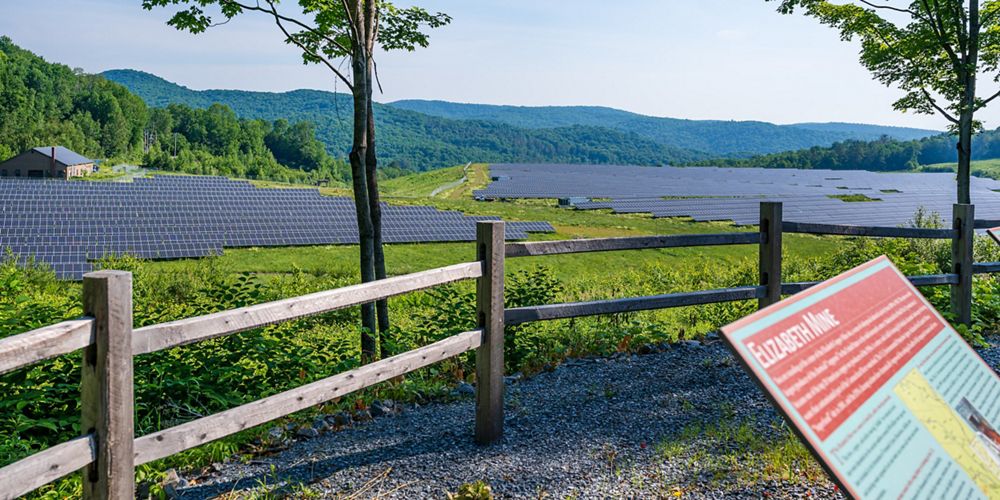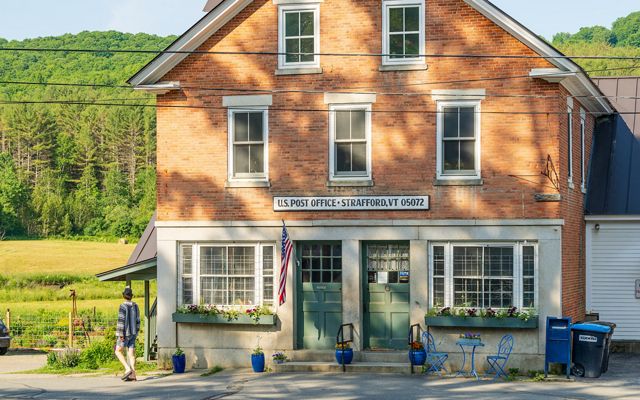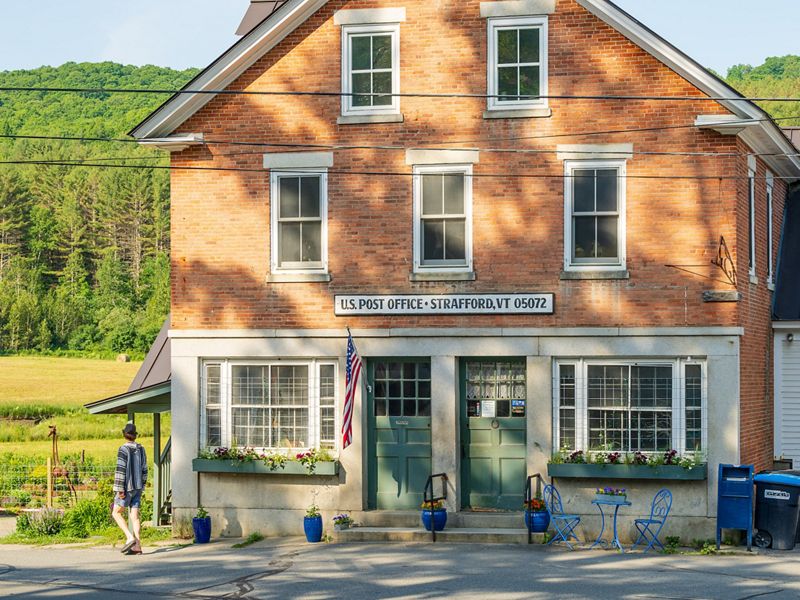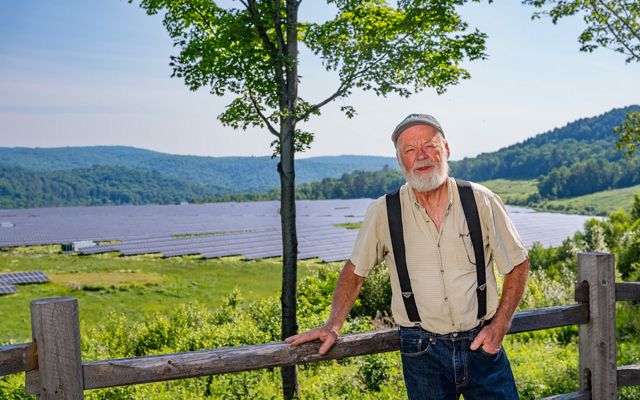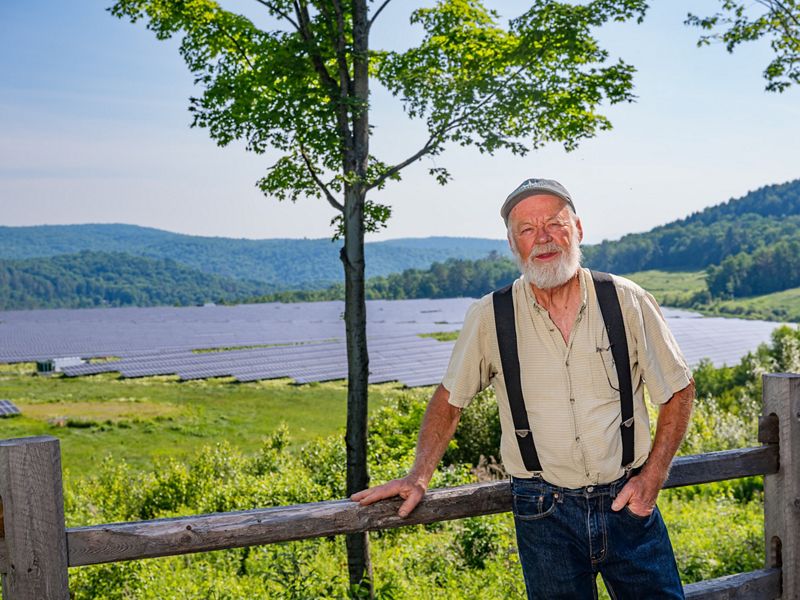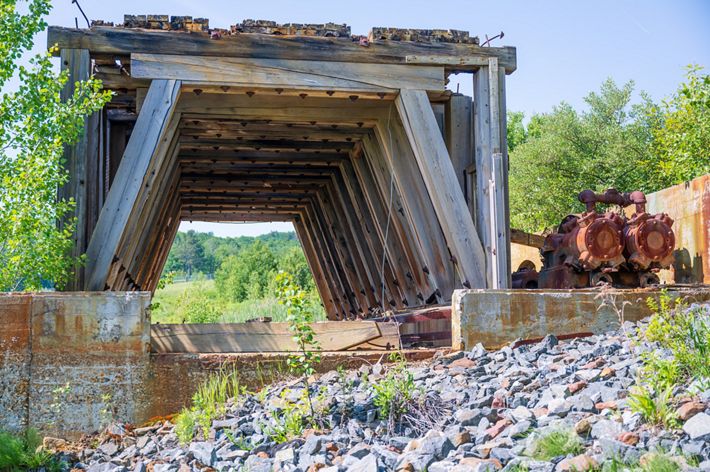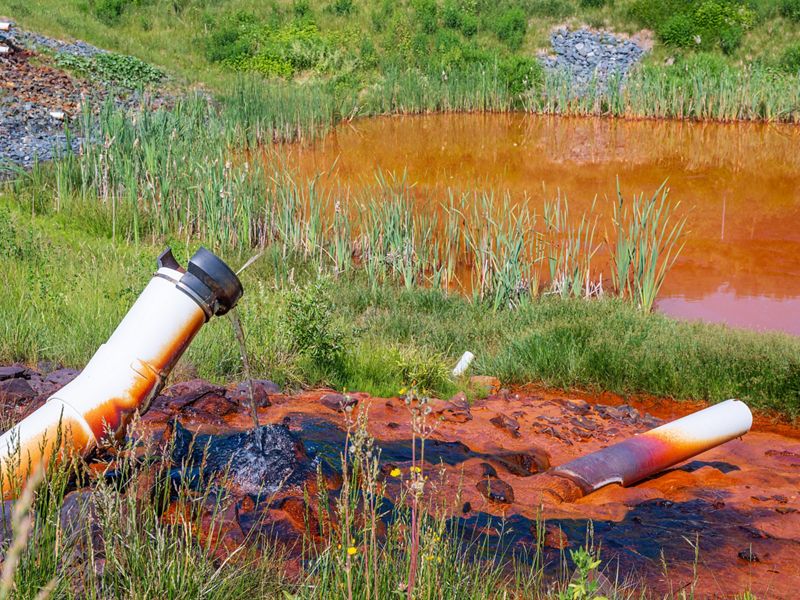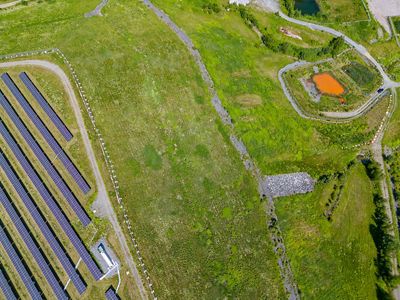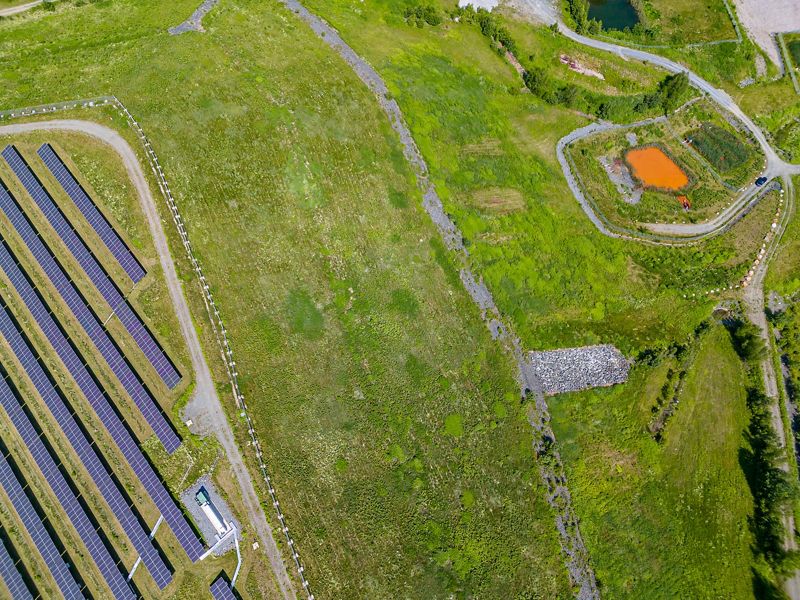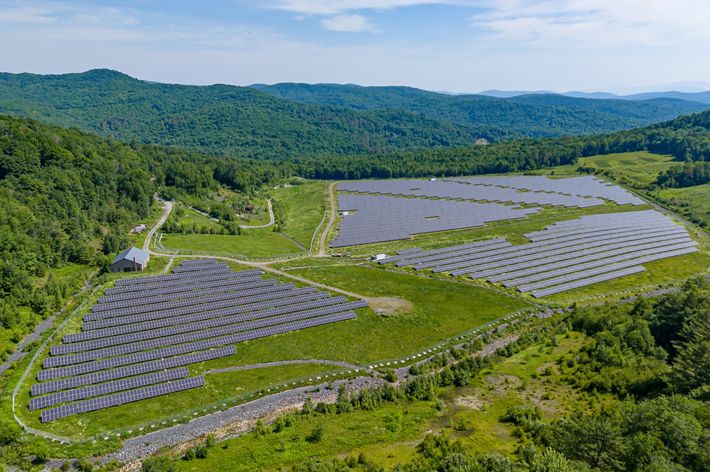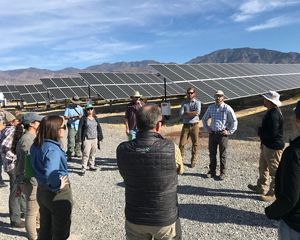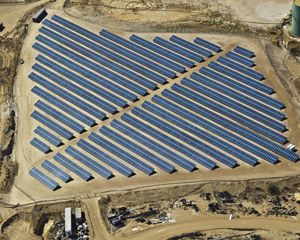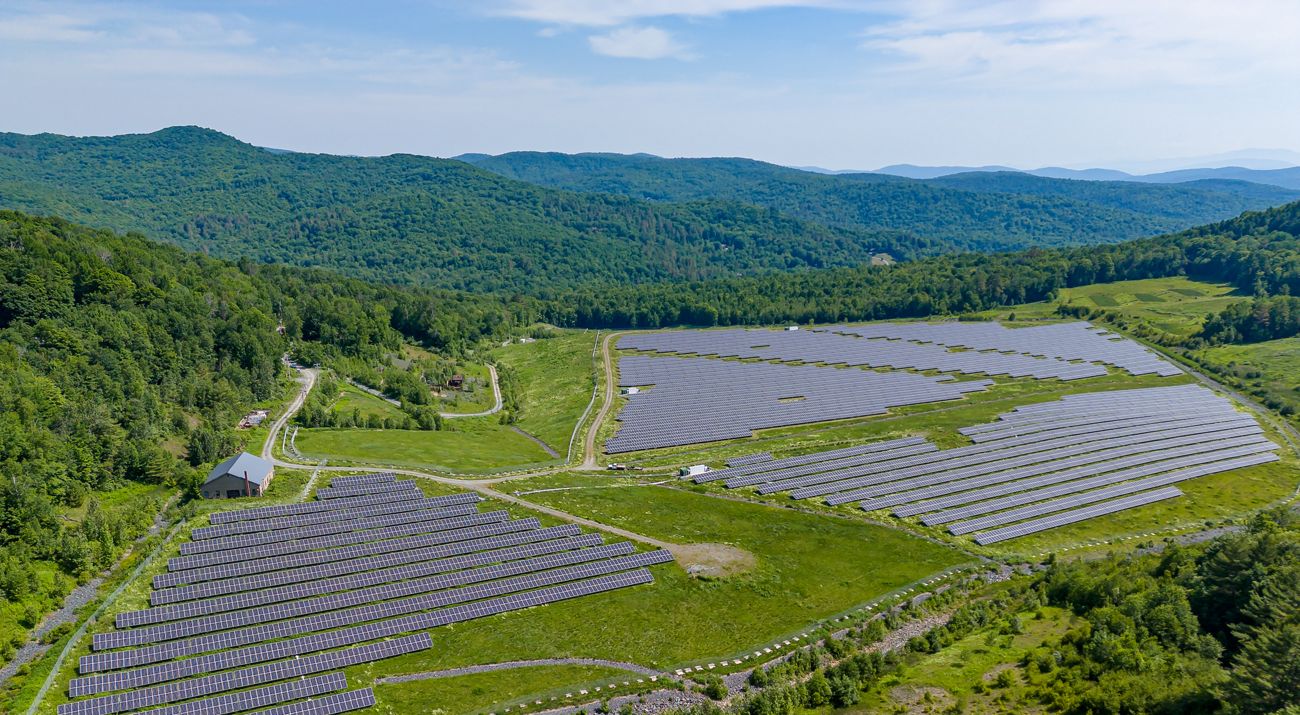
Northern Attitude: Small New England Town Embraces Solar on a Former Copper Mine
John Freitag is one of only 1,000 hearty Vermonters who can call the small town of Strafford home. It is where he grows enough potatoes, corn, apples and blueberries to feed his family for the entire year. It is where he teaches his five grandkids how to boil sap down into maple syrup. And it is where he was elected to serve on the local government body for four terms.
“Strafford is a place where you can have a voice,” Freitag says. “You can listen to your neighbors, get involved and have a positive impact.”
Tucked away in the shadows of the Green Mountains, with its charming church, dirt roads and general store where people stop to greet their neighbors, Strafford looks like the quintessential worry-free New England village. But in the early 2000s, the community that Freitag was leading had a problem.
Sitting at Strafford’s center was the Elizabeth Mine, an old copper mine that offered up the last of its metals in the 1950s. While the mine was no longer workable, the leftover elements were still leaching acid into the Ompompanoosuc River, a local waterway that feeds the Connecticut River.
That slow trickle threatened to become an acidic tidal wave. The mine’s dam was on the brink of failure. That’s when the Environmental Protection Agency swooped in to help.
“An analysis showed that if the dam failed, a muddy wave would take out 11 homes,” says Ed Hathaway, the EPA project manager. “That wave would turn 10 miles of the Connecticut River to the pH of stomach acid. It would wipe out all the natural life.”
The local river was already suffering. A five-mile stretch of the Ompompanoosuc had more than 10,000 times the acceptable amount of copper. Fish counts were low, and the layer of sediment at the bottom of the river that is usually host to tiny bugs and other organisms was showing little life. One family had elevated levels of heavy metals in their drinking well, posing a threat to their health.
Quote: Ed Hathaway
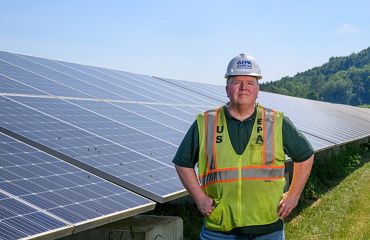
If the dam failed, a muddy wave would take out 11 homes. That wave would turn 10 miles of the Connecticut River to the pH of stomach acid.
In 2001, the EPA designated the Elizabeth Mine a Superfund site, which meant the agency could use federal dollars to have a team manage the contamination cleanup with Hathaway at the lead. But it took time before feelings from those raised out in the cold New England town would thaw towards the federal government.
“I was against it at first,” says Freitag. “The cleanup would cost over $100 million, and that’s a lot of federal money. That money belongs to everyone, and we need to be careful with it. Looking back, I think it was well spent.”
“Earning trust from the community was a process,” adds Hathaway. “They wanted to feel us out. We started meeting monthly to get to know each other and we reassured the community that we would make the mine safe.”
The EPA got to work on stabilizing the dam, installing wetlands that would filter the water and adding a barrier that would protect the surrounding environment from mine waste. After more than a decade, the town of Strafford finally saw water quality improvements. The Ompompanoosuc came off Vermont’s impaired waters list in 2014.
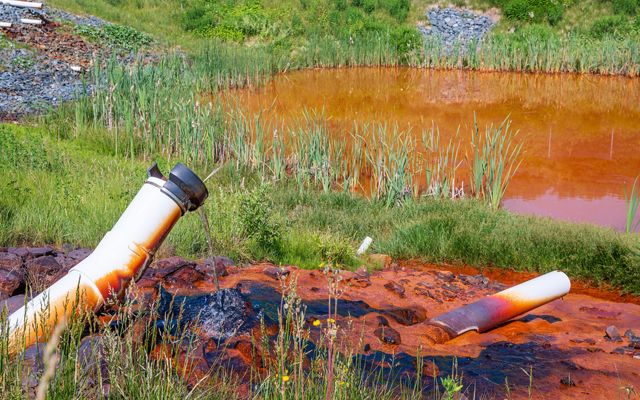
With cleanup winding down, the town began to debate what to do with the land. Freitag and the other local government officials would have to vote on the ultimate decision.
Freitag credits Dori Wolfe, a Strafford resident and staunch solar advocate, for pushing to convert the mine to renewable energy. “Dori said that what we really needed to do was cover the Elizabeth Mine with solar panels,” he says. “The Elizabeth Mine gave Strafford so much of its character. Adding solar panels would honor the mine’s history.”
The community, which Freitag describes as “environmentally conscious,” began showing up to local government meetings to talk about the merits of a solar project on the mine.
“A solar project could be good for Vermont and good for Strafford,” says Freitag. “Vermont has renewable energy requirements, but the sites that are easy to develop are on farm fields. If this mine were used for solar, it would preserve farms and forests. And we could use the tax revenue from the project to improve the schools, help lower property taxes or fix up the roads. Roads can get pretty bad around here.”
There was also the benefit of more reliable electricity, a concern of Strafford residents. The rural town had been experiencing more power outages than other parts of Vermont. Adding a solar project meant that new power lines would need to be installed, which would support the new renewable energy and would also help keep residents’ lights on.
Despite these benefits, not everyone was convinced. There was a concern that financial benefits from the solar project would flow out of small-town Vermont to bigger cities in neighboring states.
Even Freitag was skeptical at times. “We had a big town meeting and called in the electric utility that was buying the power. They agreed to keep benefits local to Vermont,” he says. “I was the swing vote, and that’s what convinced me.”
After the project was approved in a 3-2 vote, the EPA took a “hard look” at the site’s restoration process, Hathaway says. The agency altered existing plans so that the site would remain flat and therefore suitable for solar.
Quote: John Freitag
A solar project could be good for Vermont and good for Strafford. If this mine were used for solar, it would preserve farms and forests. And we could use the tax revenue from the project to improve the schools, help lower property taxes or fix up the roads.

With the go-ahead from the local government and the groundwork laid by the EPA, 20,000 panels were put in place across the 45-acre mine site. The Elizabeth Mine Solar project came online in 2016, generating 5 megawatts—enough to power every home in Strafford. Today it stands as a testament to the power of what can be created when governments work together and to the importance of giving new ideas a chance.
“Local leaders can have an impact,” Freitag says. “I was someone who questioned the whole process. It’s not always perfect, but communities can work with federal officials and have something positive come out of it. The Elizabeth Mine is an excellent model for putting solar in the right place, and it’s applicable to many other mines. Now my hope is that we can help other community leaders do the same.”
Discover More
Mining the Sun
To learn more about developing solar and other types of clean energy on mines, check out our new report called Mining the Sun.
